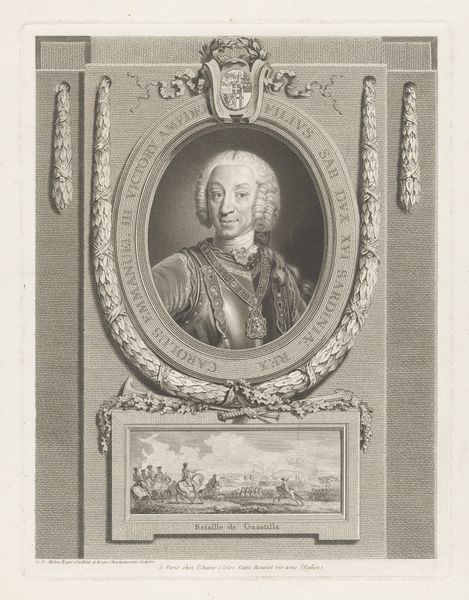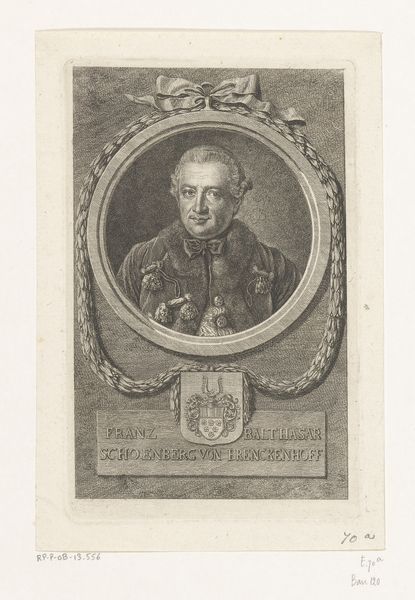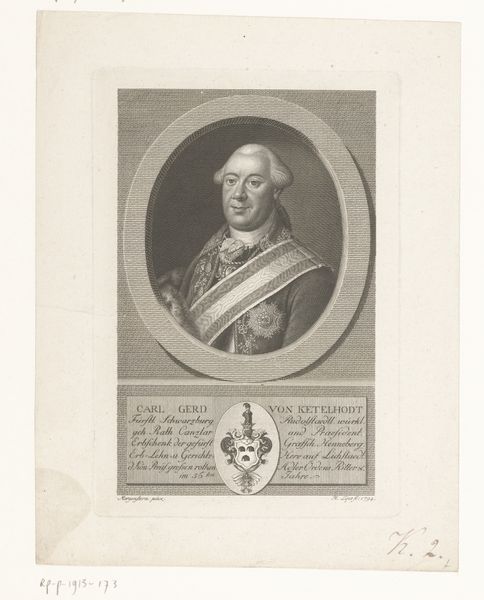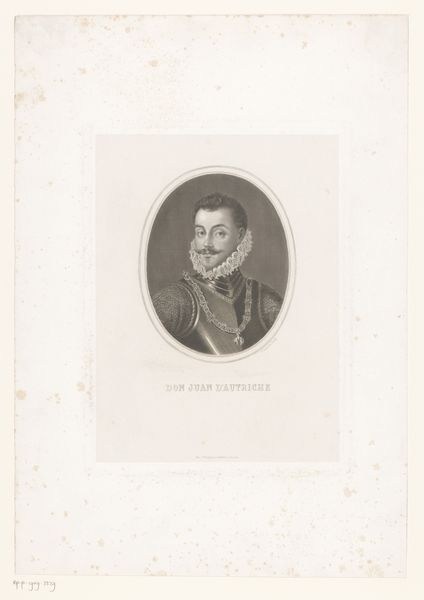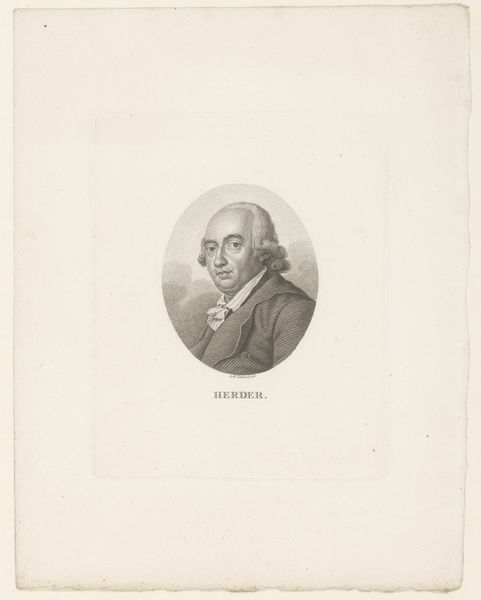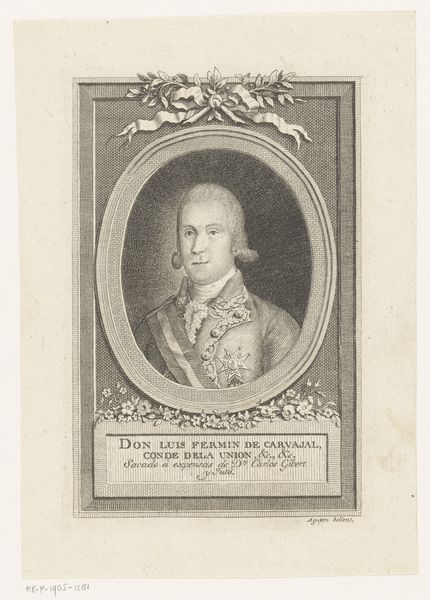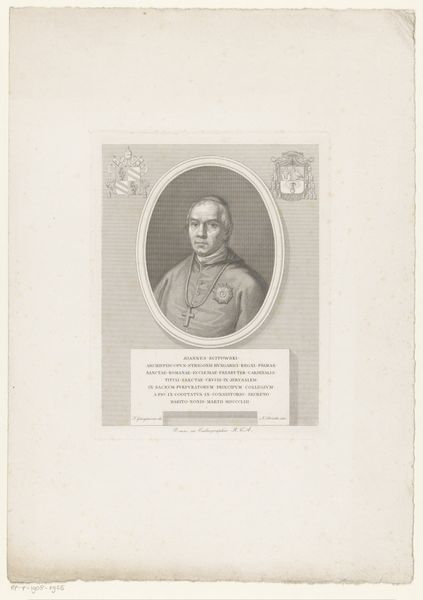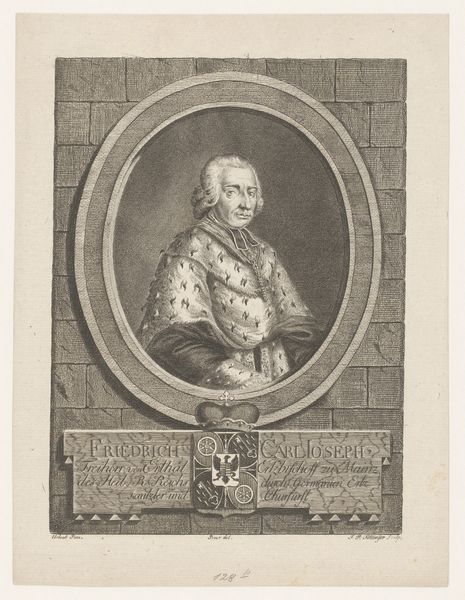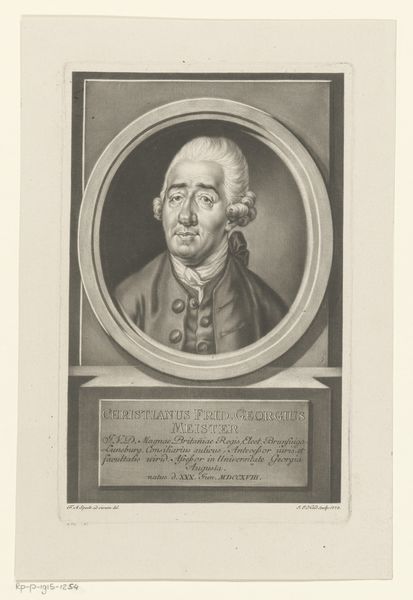
engraving
#
portrait
#
neoclacissism
#
engraving
Dimensions: height 134 mm, width 83 mm
Copyright: Rijks Museum: Open Domain
Curator: Here we have an engraving of Bogislav Friedrich von Tauentzien by Christian Schule, created sometime between 1774 and 1816. It’s a beautiful example of Neoclassical portraiture. Editor: You know, my first impression is just…serious. Like stepping into a room full of stern portraits of ancestors judging your life choices! Though the ribbon up top adds a playful touch. Curator: The piece presents Tauentzien, a prominent military figure, framed within an oval cartouche and placed atop what seems to be a small architectural pedestal. Contextually, portraiture in this era was intensely concerned with projecting status and legitimacy. How do you see this playing out here? Editor: Oh, totally. Look at the detail on his uniform. And that star—someone wants you to know he’s important. But I also find something vulnerable in his expression, almost like he knows the weight of it all. Or maybe it's my projecting onto a two-hundred-year-old engraving? Curator: His expression absolutely complicates the image. Considering the socio-political turbulence of Europe at this time—wars, shifting power dynamics—one can interpret that look as emblematic of the anxieties of leadership, and nobility more broadly. The engraving process itself, meticulous and reproducible, adds another layer. It’s not just a portrait; it's a carefully constructed image intended for wide dissemination. Editor: Right. He's selling an image of strength, duty, and stoicism but his eyes… his eyes tell a different story! The ribbons add something too…like a symbol for him too be mindful, almost childlike. A reminder not to let this fame change who he is and what is in his hear and morals, or maybe his humanity slipping into war-time? Curator: Precisely. And the work’s Neoclassical style underscores this intention. Notice the clarity of line, the emphasis on form, all speaking to reason and order. Even the minimal embellishment underscores the focus on the individual. The piece serves as a reminder that portraiture is always an act of construction, shaping narratives of power and identity. Editor: So much more than just a face on paper! You have cracked opened to the history to a man and I am so intrique, even a litte emotional...like that "stern man" in the portrait now just wants a hug. Curator: Agreed. Examining artwork such as this enables us to explore broader, more relevant themes that we relate with even today.
Comments
No comments
Be the first to comment and join the conversation on the ultimate creative platform.
